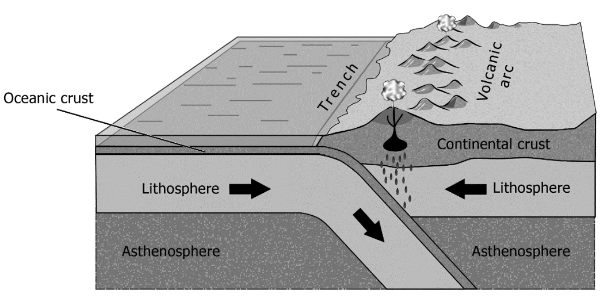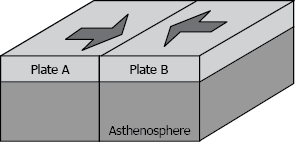
Plate Tectonics
Assessment
•
Barkley Mapes
•
Science
•
7th - 8th Grade
•
16 plays
•
Hard
Improve your activity
Higher order questions
Match
•
Reorder
•
Categorization
.svg)
actions
Add similar questions
Add answer explanations
Translate quiz
Tag questions with standards
More options
23 questions
Show answers
1.
Multiple Choice
When comparing the lithosphere to the asthenosphere, which statement is correct?
The asthenosphere is part of the crust, and the lithosphere is part of the mantle.
The lithosphere is a layer of flowing hot magma that supports the solid thin layer of the asthenosphere.
The lithosphere is brittle and rigid, and the asthenosphere is plastic-like and flowing.
The asthenosphere is a thin layer that sits on top of the lithosphere.
2.
Multiple Choice
Which statement is true regarding the movement of the continents on the opposite sides of the Atlantic Ocean?
They are drifting closer together.
They have remained the same distance apart.
They drifted further apart and then drifted closer together.
They are drifting farther apart.
3.
Multiple Choice
What causes the Earth's crustal plates to move?
convection currents in the Earth's mantle
revolution of the Earth around the Sun
volcanism within the Earth's lithosphere
the rotation of the Earth on its axis
4.
Multiple Choice
Which layer of the Earth is described as "plastic and flowing"?
asthenosphere
atmosphere
lithosphere
troposphere
5.
Multiple Choice
When parts of the upper mantle collide with each other, the force causes changes on the surface like volcanoes and fractures. Why does the collision not impact the asthenosphere?
The asthenosphere is plastic and brittle.
The asthenosphere is plastic and flowing.
The asthenosphere is rigid and flowing.
The asthenosphere is rigid and brittle.
6.
Multiple Choice
Which statement is supported by the Theory of Continental Drift?
Present-day continents of South America and Africa are moving toward each other.
Continents move due to changes in the Earth's orbit around the Sun.
Present-day continents of South America and Africa once fit together like a jigsaw puzzle.
Continents move due to changes in the tilt of the Earth's axis.

Explore this activity with a free account
Find a similar activity
Create activity tailored to your needs using
.svg)

Plate Tectonics
•
11th - 12th Grade

Plate Tectonics
•
9th - 12th Grade

Plate Tectonics
•
6th Grade

Plate Boundaries
•
6th - 8th Grade

Plate Boundaries
•
6th - 7th Grade

Tectonic Plates
•
6th - 8th Grade

Earthquakes
•
5th Grade

Plate Tectonics, Earthquakes, Volcanoes
•
9th - 12th Grade

